László Moholy-Nagy Follow Prototype desk set 1946 Pen rest and letter holder: chromium-plated brass, brass. Pen: Lucite, steel. Pen rest and letter holder: 10.3 x 23.5 x 15.6 cm (4 x 9 1/4 x 6 1/8 in.) Pen: 15.5 cm (6 1/8 in.) length Parker 51 pen designed by Kenneth Parker and Marlin Baker, 1938.
Provenance Private collection, Milton, Wisconsin Susan M. Wirth, Milwaukee, Wisconsin, acquired from the above, 2013 Exhibited 'Moholy-Nagy: Future Present', the Solomon R. Guggenheim Museum, New York, 27 May-7 September 2016, and then travelled to the Art Institute of Chicago, Chicago, 2 October 2016-3 January 2017, and the Los Angeles County Museum of Art, Los Angeles, 12 February-18 June 2017 Literature Sibyl Moholy-Nagy, Moholy-Nagy: Experiment in Totality , New York, 1950, illustrated p. 211, fig. 74 Matthew S. Witkovsky, Carol S. Eliel, and Karole P.B. Vail, Moholy-Nagy: Future Present , exh. cat., Art Institute of Chicago, Chicago, 2016, illustrated p. 238, pl. 273 Catalogue Essay 'There is design in organisation of emotional experiences, in family life, in labour relations, in city planning, in working together as civilised human beings. Ultimately all problems of design merge into one great problem: design for life. In a healthy society this design for life will encourage every profession and vocation to play its part since the degree of relatedness in all their work gives to any civilisation its quality. This implies that it is desirable that everyone should solve his special task with the wide scope of a true designer with the new urge to integrated relationships. It further implies that there is no hierarchy of the arts, painting photography, music, poetry, sculpture, architecture, nor of any other fields such as industrial design. They are equally valid departures toward the fusion of function and content in design.' László Moholy-Nagy László Moholy-Nagy’s 1946 chromium-plated brass desk set is a rare example of the Bauhaus master’s use of art and technology to create a functional object. Though Moholy-Nagy’s name is synonymous with the teaching of modern design, seldom do we find an every-day object that he designed. In fact this desk set is the only known example of Moholy-Nagy’s design to ever appear at auction. Created during the last year of his shortened life, it is a product of Moholy’s quarter-century dedication to the ‘education of the senses’ through the exploration of light, space, form and motion. Believing in the transformative power of art for the good of society, Moholy–Nagy revolutionised the teaching of modern industrial design starting with his appointment by Walter Gropius to the Staatliche Bauhaus in Germany (1923-28). In 1937 Moholy-Nagy was invited to Chicago by a group of local industrialists to establish the New Bauhaus - American School of Design. After one school year the industrialist association withdrew their financial support, and in 1939 Moholy-Nagy founded his own school The School of Design in Chicago, which was reorganised in 1944 as The Institute of Design. Moholy-Nagy created this machine-age pen and letter holder whilst working as the artistic advisor to the Parker Pen Company (1944 -46). Once a month he left family and school in Chicago to spend two days with the company in Janesville, Wisconsin. Sybil Moholy-Nagy, in the first edition of her book Moholy- Nagy: Experiment in Totality , used a photograph of this desk set to illustrate her husband’s industrial design (Sybil Moholy-Nagy, Moholy-Nagy: Experiment in Totality , New York, 1950, pg. 211, fig. 74). The desk set then disappeared from public knowledge until 2013 when it was re-discovered in Wisconsin by Susan Wirth, a renowned pen collector, and subsequently included in the recent travelling retrospective and catalogue ‘Moholy-Nagy: Future Present’. The desk set is a unique object that contains two industrially produced elements. What is unique is the base: a chromium-plated rectangular platform that is buttressed by a repetition of six cut-out shapes serving as letter holders. A second part of the desk set is the penholder, which is inserted into the end of the base. It is made up of a magnet ball and socket enabling the pen to pivot in all directions. The rotating penholder was designed by Moholy-Nagy and copyrighted b
László Moholy-Nagy Follow Prototype desk set 1946 Pen rest and letter holder: chromium-plated brass, brass. Pen: Lucite, steel. Pen rest and letter holder: 10.3 x 23.5 x 15.6 cm (4 x 9 1/4 x 6 1/8 in.) Pen: 15.5 cm (6 1/8 in.) length Parker 51 pen designed by Kenneth Parker and Marlin Baker, 1938.
Provenance Private collection, Milton, Wisconsin Susan M. Wirth, Milwaukee, Wisconsin, acquired from the above, 2013 Exhibited 'Moholy-Nagy: Future Present', the Solomon R. Guggenheim Museum, New York, 27 May-7 September 2016, and then travelled to the Art Institute of Chicago, Chicago, 2 October 2016-3 January 2017, and the Los Angeles County Museum of Art, Los Angeles, 12 February-18 June 2017 Literature Sibyl Moholy-Nagy, Moholy-Nagy: Experiment in Totality , New York, 1950, illustrated p. 211, fig. 74 Matthew S. Witkovsky, Carol S. Eliel, and Karole P.B. Vail, Moholy-Nagy: Future Present , exh. cat., Art Institute of Chicago, Chicago, 2016, illustrated p. 238, pl. 273 Catalogue Essay 'There is design in organisation of emotional experiences, in family life, in labour relations, in city planning, in working together as civilised human beings. Ultimately all problems of design merge into one great problem: design for life. In a healthy society this design for life will encourage every profession and vocation to play its part since the degree of relatedness in all their work gives to any civilisation its quality. This implies that it is desirable that everyone should solve his special task with the wide scope of a true designer with the new urge to integrated relationships. It further implies that there is no hierarchy of the arts, painting photography, music, poetry, sculpture, architecture, nor of any other fields such as industrial design. They are equally valid departures toward the fusion of function and content in design.' László Moholy-Nagy László Moholy-Nagy’s 1946 chromium-plated brass desk set is a rare example of the Bauhaus master’s use of art and technology to create a functional object. Though Moholy-Nagy’s name is synonymous with the teaching of modern design, seldom do we find an every-day object that he designed. In fact this desk set is the only known example of Moholy-Nagy’s design to ever appear at auction. Created during the last year of his shortened life, it is a product of Moholy’s quarter-century dedication to the ‘education of the senses’ through the exploration of light, space, form and motion. Believing in the transformative power of art for the good of society, Moholy–Nagy revolutionised the teaching of modern industrial design starting with his appointment by Walter Gropius to the Staatliche Bauhaus in Germany (1923-28). In 1937 Moholy-Nagy was invited to Chicago by a group of local industrialists to establish the New Bauhaus - American School of Design. After one school year the industrialist association withdrew their financial support, and in 1939 Moholy-Nagy founded his own school The School of Design in Chicago, which was reorganised in 1944 as The Institute of Design. Moholy-Nagy created this machine-age pen and letter holder whilst working as the artistic advisor to the Parker Pen Company (1944 -46). Once a month he left family and school in Chicago to spend two days with the company in Janesville, Wisconsin. Sybil Moholy-Nagy, in the first edition of her book Moholy- Nagy: Experiment in Totality , used a photograph of this desk set to illustrate her husband’s industrial design (Sybil Moholy-Nagy, Moholy-Nagy: Experiment in Totality , New York, 1950, pg. 211, fig. 74). The desk set then disappeared from public knowledge until 2013 when it was re-discovered in Wisconsin by Susan Wirth, a renowned pen collector, and subsequently included in the recent travelling retrospective and catalogue ‘Moholy-Nagy: Future Present’. The desk set is a unique object that contains two industrially produced elements. What is unique is the base: a chromium-plated rectangular platform that is buttressed by a repetition of six cut-out shapes serving as letter holders. A second part of the desk set is the penholder, which is inserted into the end of the base. It is made up of a magnet ball and socket enabling the pen to pivot in all directions. The rotating penholder was designed by Moholy-Nagy and copyrighted b
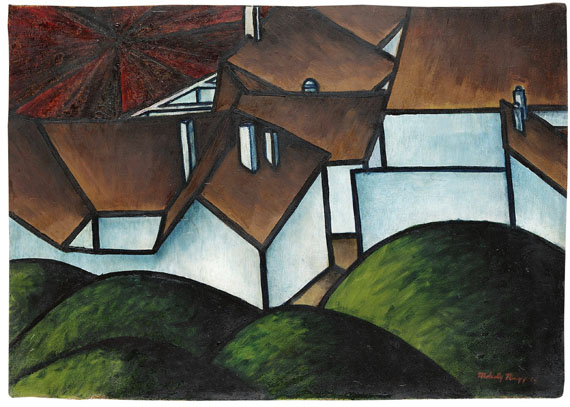
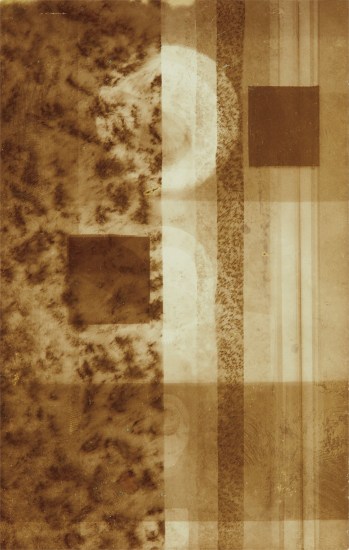

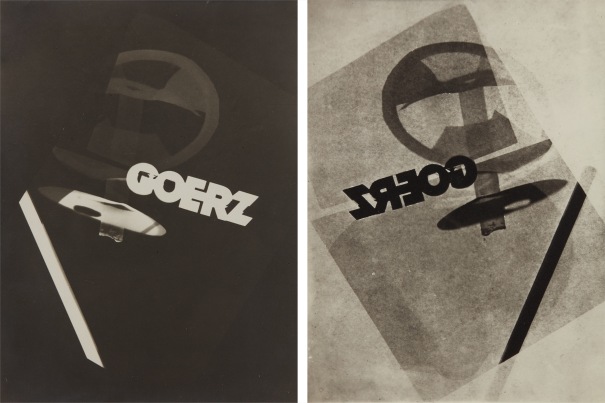
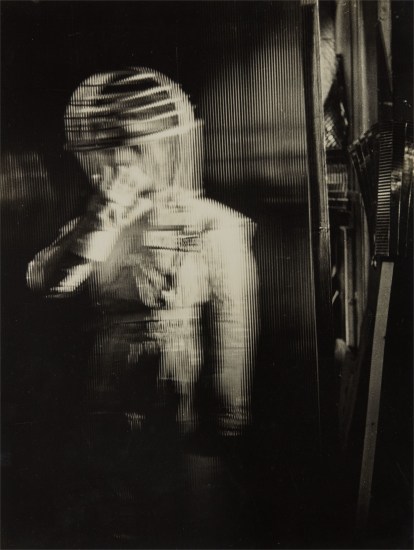

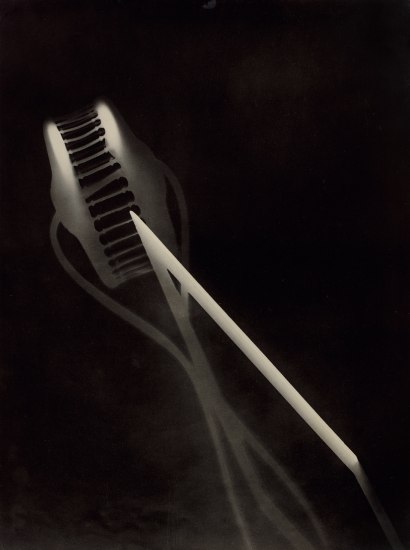

.jpg)
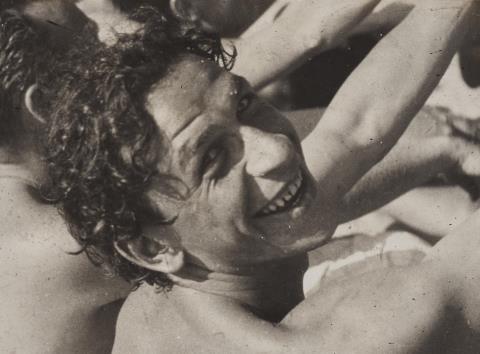


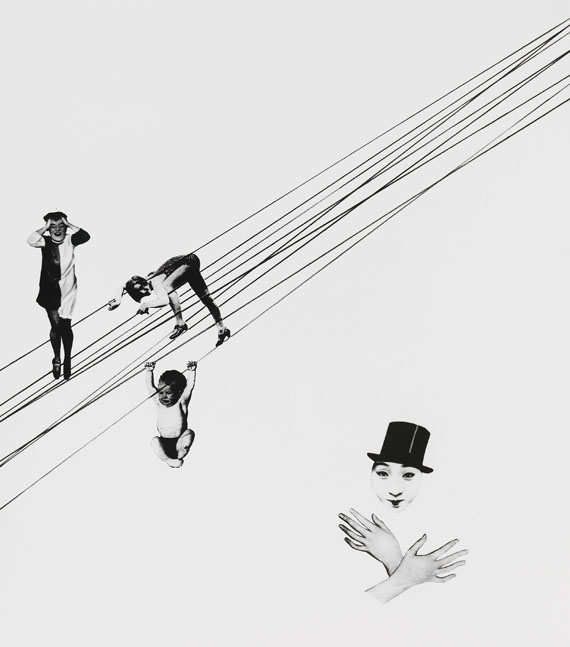
Testen Sie LotSearch und seine Premium-Features 7 Tage - ohne Kosten!
Lassen Sie sich automatisch über neue Objekte in kommenden Auktionen benachrichtigen.
Suchauftrag anlegen